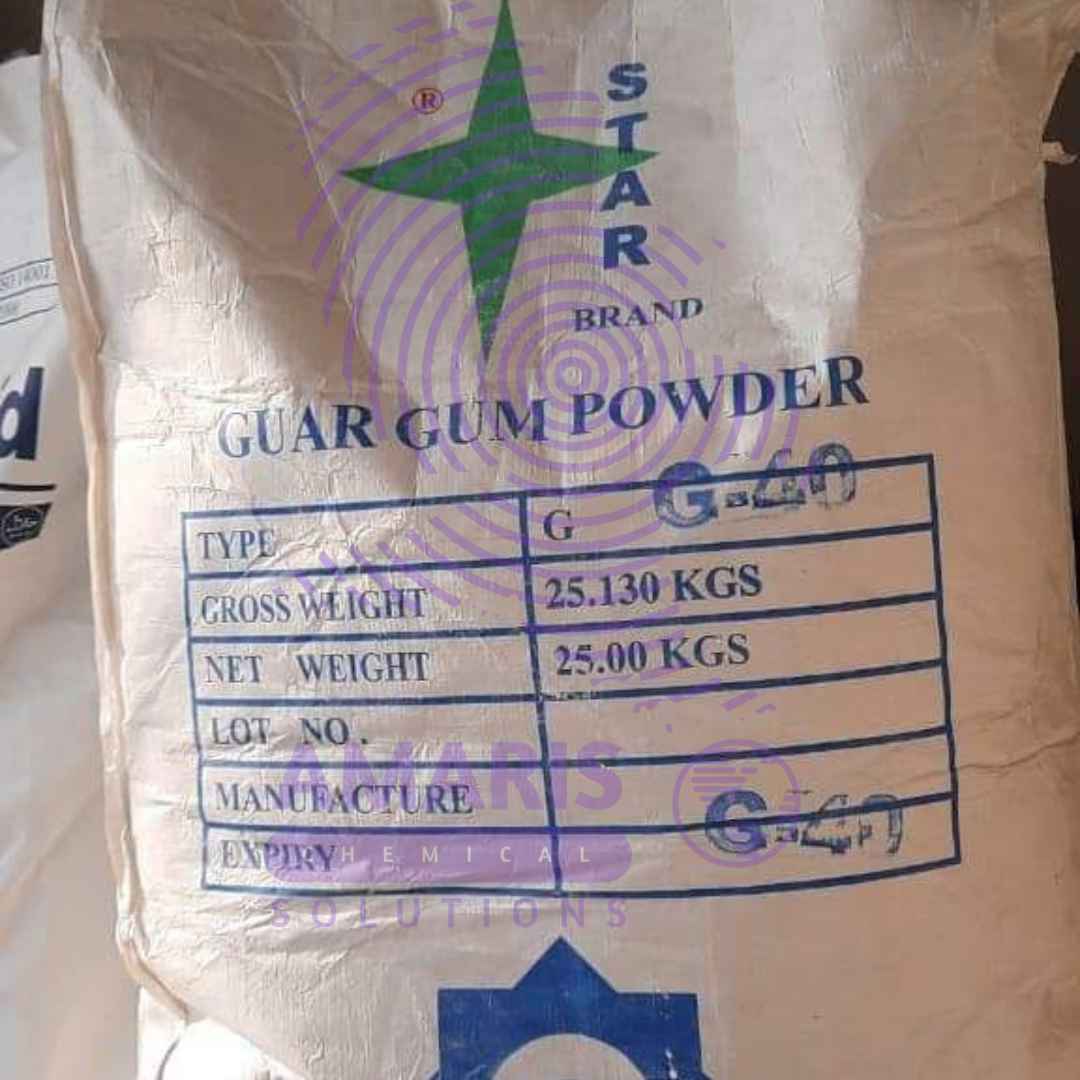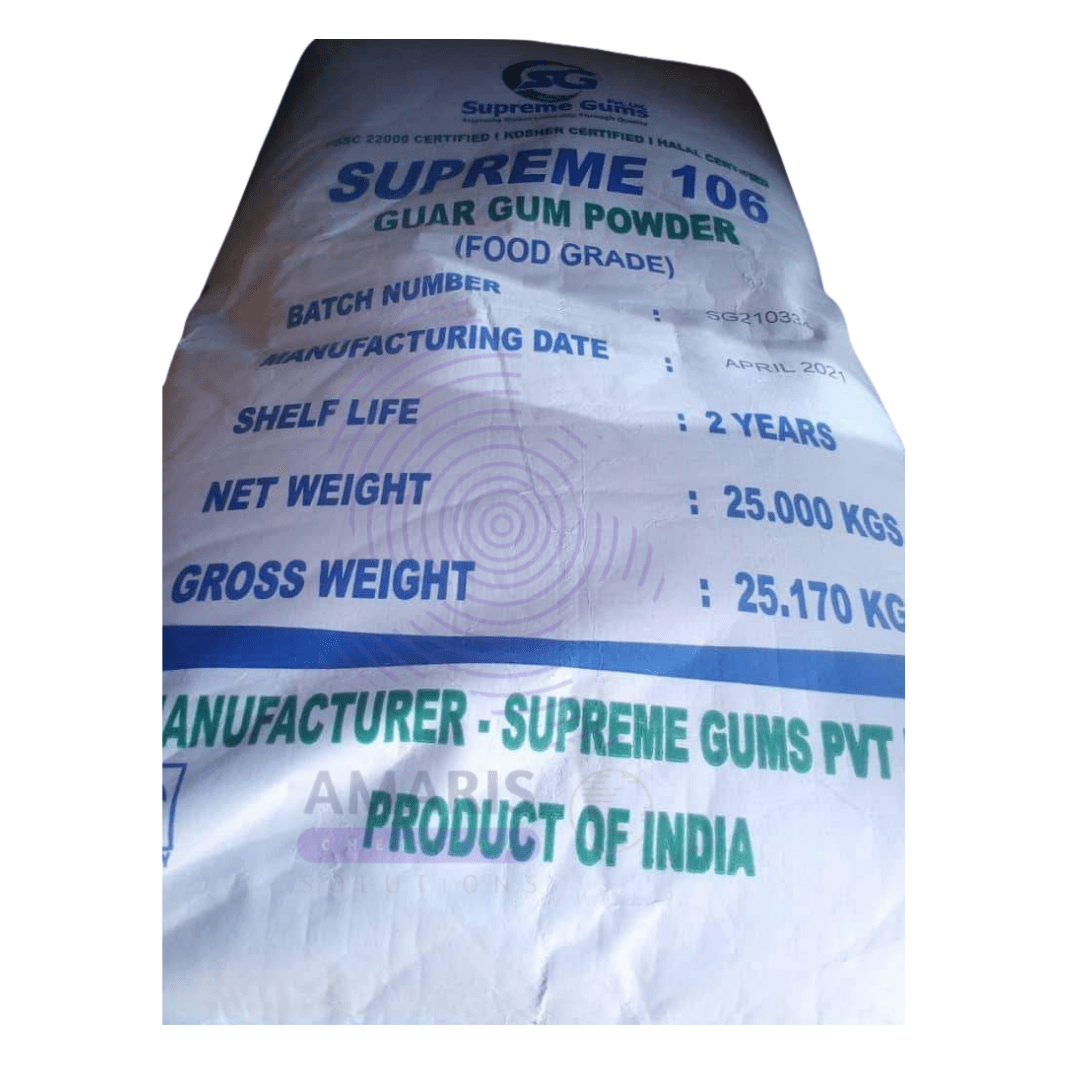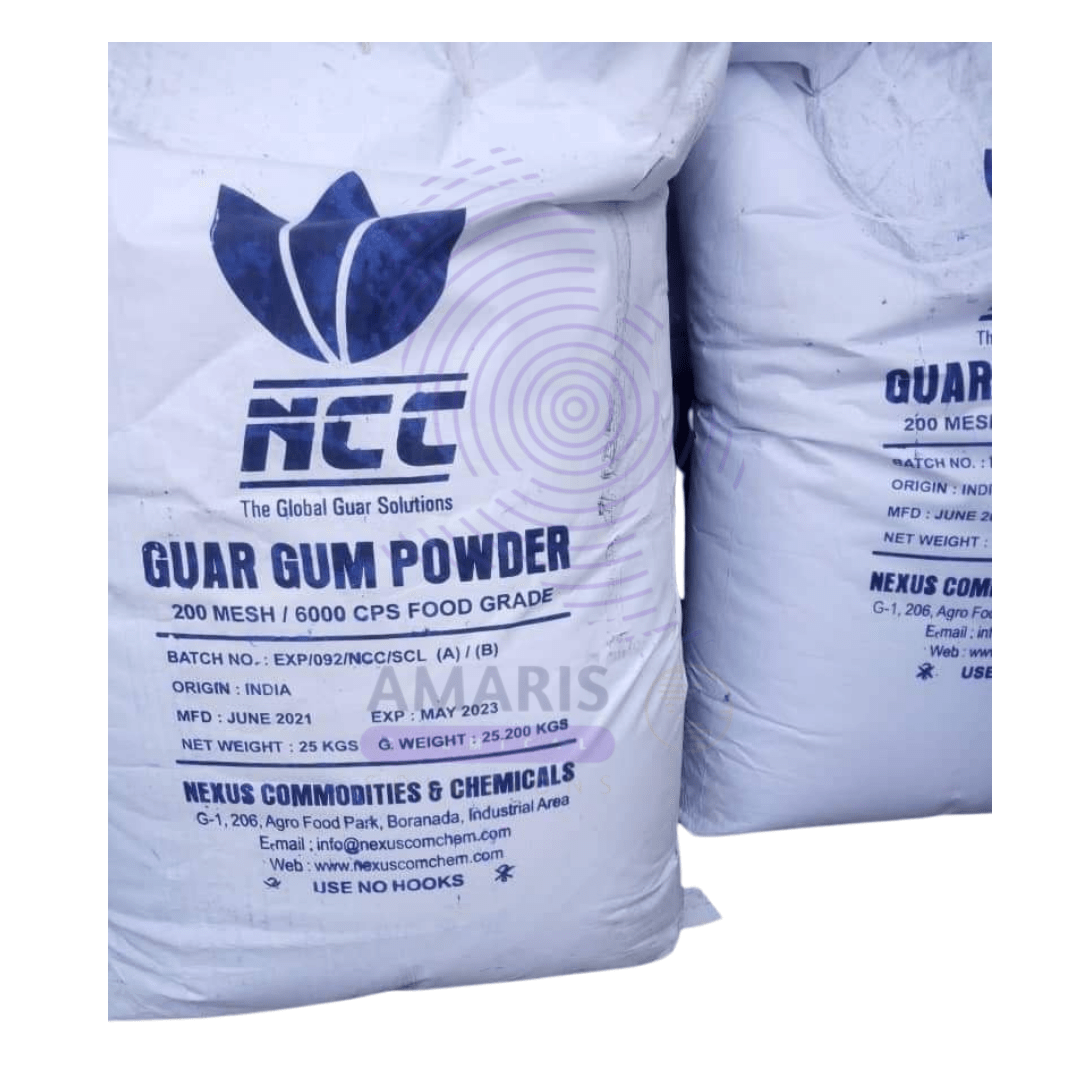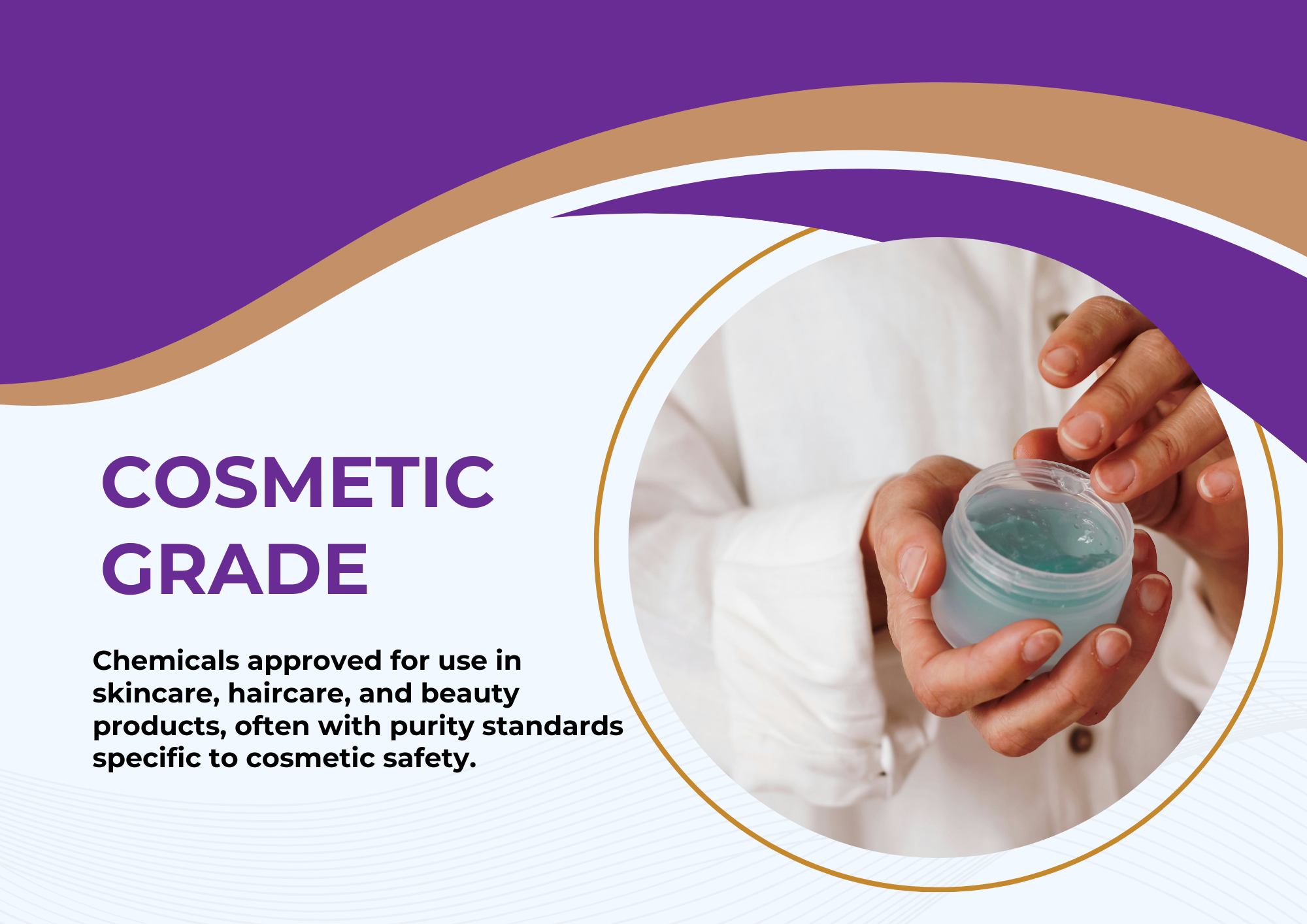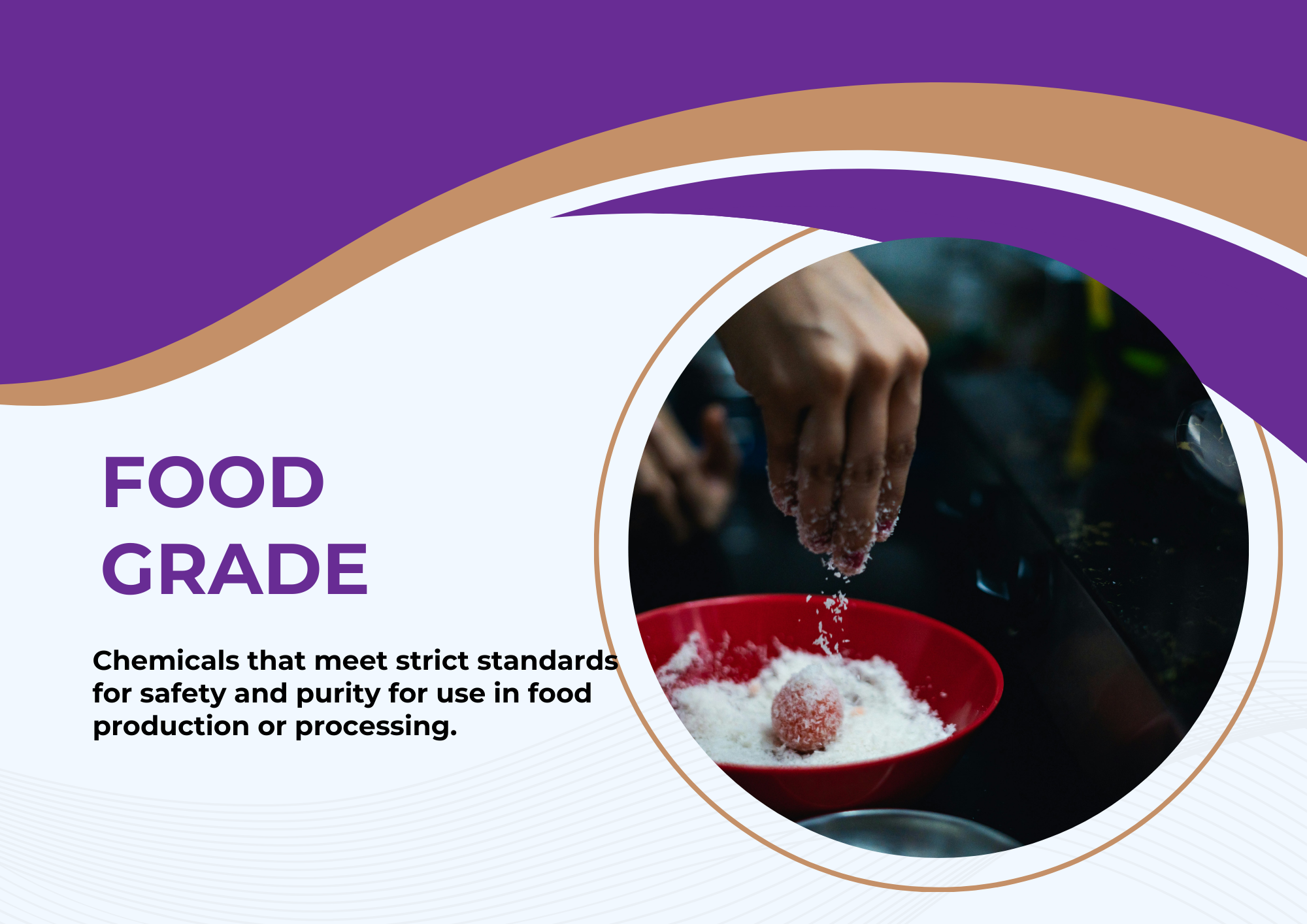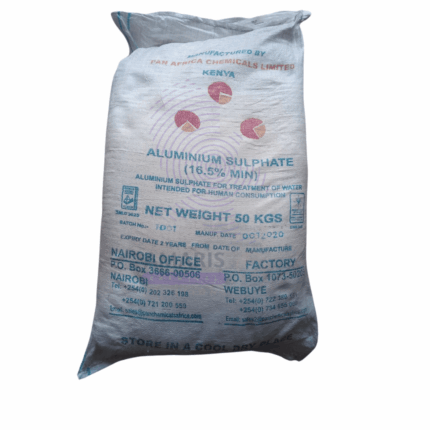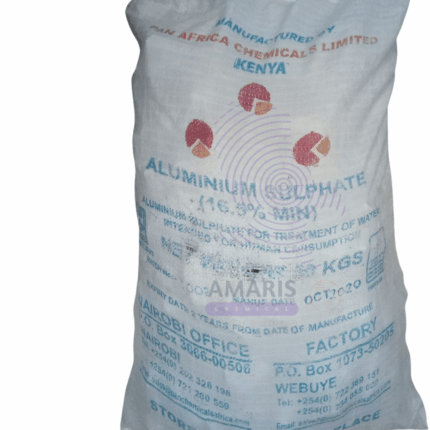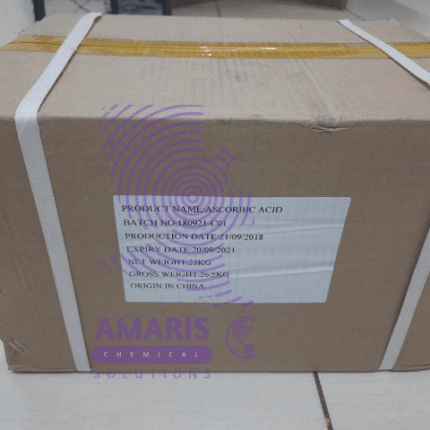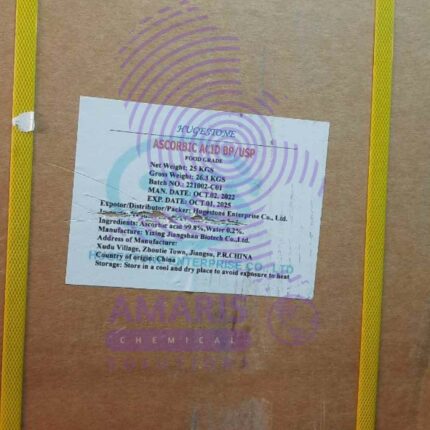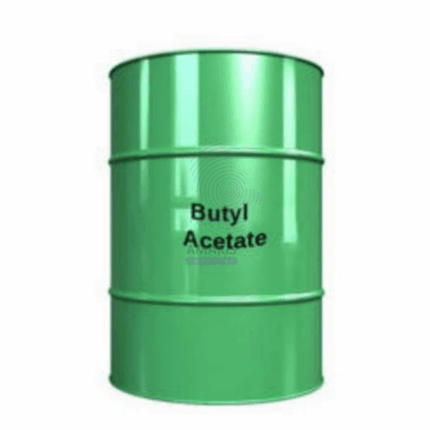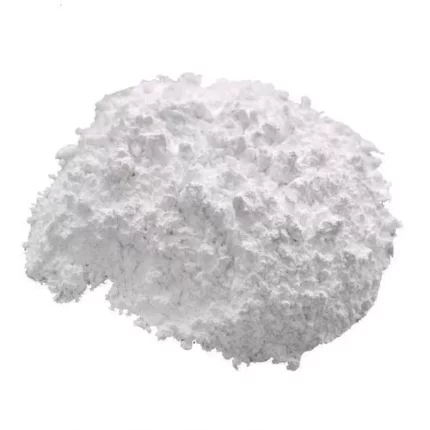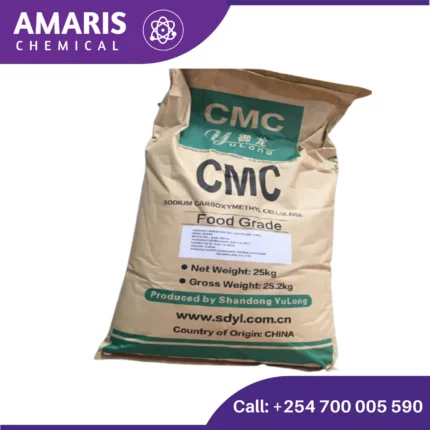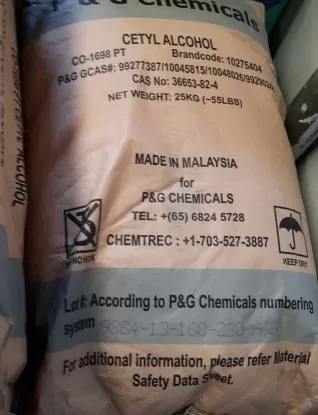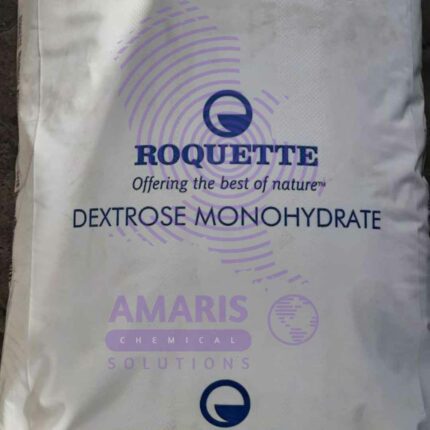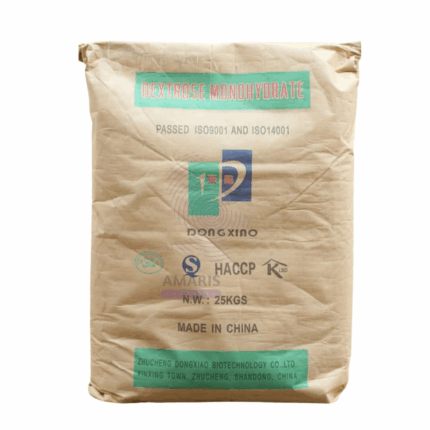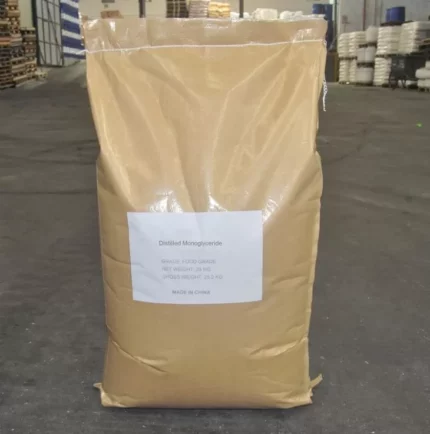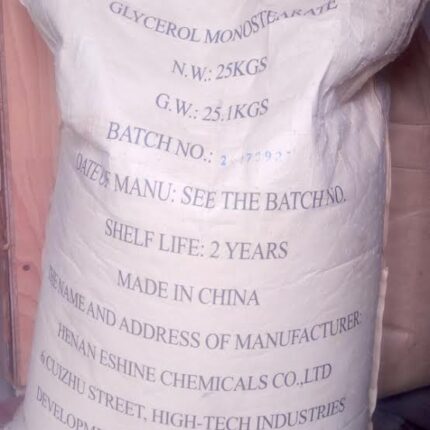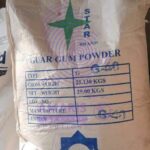
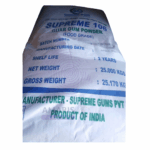
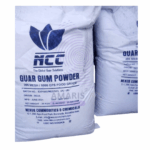
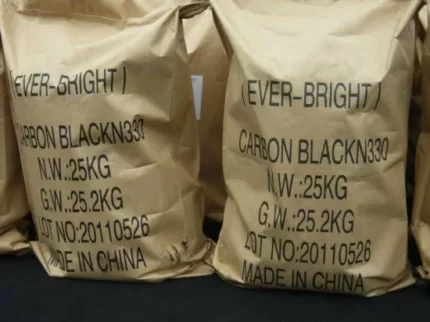
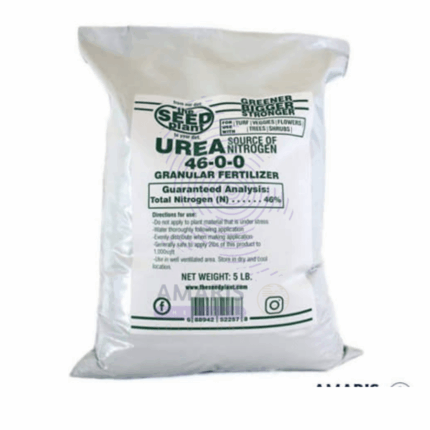
Guar gum
$8,500.00 Original price was: $8,500.00.$7,900.00Current price is: $7,900.00.
Guar gum is a natural, water-soluble polysaccharide extracted from the seeds of the guar plant (Cyamopsis tetragonoloba), which is grown mainly in India and Pakistan. It is commonly used as a thickener, stabilizer, and emulsifier in a wide range of food and non-food products, including baked goods, dairy products, sauces, dressings, beverages, personal care products, and industrial applications. Guar gum has excellent viscosity and water-binding properties, and it can improve the texture, mouthfeel, and shelf life of many products
Guar Gum Uses
Primary Uses of Guar Gum
These are applications where guar gum is intentionally added for its functional properties.
1. Food Industry (Most Common Use)
- Thickener & Stabilizer– Used in:
- Dairy products(ice cream, yogurt, cheese) to improve texture.
- Bakery items(bread, cakes) to retain moisture and extend shelf life.
- Sauces, dressings & soupsto prevent separation and enhance viscosity.
- Emulsifier– Helps mix oil and water in products like salad dressings.
- Gluten-Free Baking– Mimics gluten’s binding properties in gluten-free flour.
- Meat & Poultry Processing– Improves water retention in sausages and deli meats.
2. Pharmaceutical & Nutraceutical Applications
- Tablet Binder & Disintegrant– Helps in tablet formation and quick dissolution.
- Suspension Agent– Keeps insoluble drugs evenly distributed in liquid medicines.
- Dietary Fiber Supplement– Used in weight-loss products for its soluble fiber content.
3. Cosmetics & Personal Care
- Thickener in Lotions & Creams– Improves consistency and spreadability.
- Stabilizer in Toothpaste– Prevents separation of ingredients.
- Hair Conditioner– Adds slip and detangling properties in shampoos.
4. Industrial Applications
- Oil & Gas Industry– Used in hydraulic fracturing (fracking) to thicken drilling fluids.
- Textile Printing– Acts as a thickener in dye pastes.
- Paper Manufacturing– Improves sheet formation and strength.
Secondary Uses of Guar Gum
These are cases where guar gum aids in production but may not remain in the final product.
1. Food Processing (Temporary Functions)
- Clarifying Agent in Beverages– Helps remove impurities (filtered out later).
- Dough Handling Aid– Improves machinability but breaks down during baking.
2. Pharmaceutical Manufacturing
- Granulation Aid– Binds powders before tablet compression (may not remain in final product).
- Temporary Suspension Agent– Used in liquid formulations but removed during filtration.
3. Industrial Processing
- Mining & Ore Separation– Used in flotation processes but not in final ore.
- Temporary Adhesive– Helps in paper bonding but not present in final product.
| APPEARANCE |
Powdery – Fine, dry particles e.g., baking soda |
|---|---|
| AVAILABLE PACK SIZE |
25kg( Metal or Plastic Jerrycan/ Bucket, Bag, Box, Polythene bag, Carton bag) |
1. Basic Identification Attributes
- Chemical Name (IUPAC):Not applicable (natural polysaccharide)
- Common/Trade Name:Guar Gum, Guaran, Cyamopsis gum
- CAS Number:[9000-30-0]
- HS Code:32.90 (Vegetable saps and extracts)
- Molecular Formula:(C₆H₁₂O₆)ₙ (Galactomannan polysaccharide)
- Synonyms:
- Cluster bean gum
- Jaguar gum (trade name)
- Guar flour
- E412 (food additive code)
2. Physical & Chemical Properties
- Physical State:Fine to coarse powder
- Color & Odor:Off-white to yellowish; odorless
- Melting Point:Decomposes at ~250°C (does not melt)
- Boiling Point:Not applicable (degrades before boiling)
- Density/Specific Gravity:~0.8-0.85 g/cm³ (bulk density)
- Solubility:
- Soluble in cold/hot water (forms viscous colloid)
- Insoluble in most organic solvents
- pH Level:5-7.0 (1% solution)
- Viscosity:3,000-6,000 cP (1% solution, 25°C)
- Moisture Content:≤12% (typical)
3. Safety & Hazard Attributes
- Hazard Class (GHS):Non-hazardous
- NFPA Ratings:
- Health: 0
- Flammability: 1 (dust may be combustible)
- Reactivity: 0
- Exposure Limits:
- OSHA PEL: Not established
- ACGIH TLV: Not established
- Reactivity:
- Stable under normal conditions
- Incompatible with strong oxidizers
- Dust Explosion Risk:Possible at high concentrations
4. Storage & Handling Attributes
- Storage Conditions:
- Cool (<25°C), dry environment
- Relative humidity <65%
- Away from direct sunlight
- Incompatible Materials:
- Strong oxidizers
- Excessive moisture
- Container Type:
- Multi-wall paper bags with polyethylene liner
- Fiber drums
- Shelf Life:2-3 years if stored properly
- Special Handling:
- Use dust masks in powder handling
- Minimize dust generation
5. Regulatory & Compliance Attributes
- Regulatory Status:
- FDA: 21 CFR 184.1339 (GRAS)
- EU: Approved as E412
- JECFA: ADI "not specified"
- Hazard Symbols (GHS):None required
- Transportation Restrictions:
- Not classified as dangerous goods
- May be subject to dust explosion regulations in bulk
- Waste Disposal:
- Dispose as non-hazardous waste
- Compostable/biodegradable
6. Environmental & Health Impact
- Ecotoxicity:
- Practically non-toxic to aquatic organisms
- LD50 (oral, rat) >5,000 mg/kg
- Persistence in Environment:
- Readily biodegradable
- Carcinogenicity/Mutagenicity:
- Not classified by IARC, NTP, or OSHA
- Biodegradability:
- 90% in 28 days (OECD 301)
Personal Protective Equipment (PPE):
- Dust mask(N95 or equivalent) when handling powdered form to prevent inhalation.
- Safety gogglesto protect eyes from dust irritation.
- Gloves(nitrile or latex) to minimize skin contact (though low risk).
- Lab coat or apronto prevent contamination.
Ventilation:
- Use in a well-ventilated areato avoid dust accumulation.
- Local exhaust ventilation recommended for large-scale powder handling.
Handling & Storage:
- Store in a cool, dry placeaway from moisture (hygroscopic—absorbs water).
- Keep away from strong oxidizers(e.g., peroxides, chlorates).
- Avoid creating dust clouds (powder can be a mild respiratory irritant).
Hygiene Measures:
- Wash hands after handling.
- Avoid eating, drinking, or smoking in areas where guar gum powder is used.
Inhalation (Dust Exposure):
- Move to fresh air
- If breathing difficulties occur, seek medical attention.
Skin Contact:
- Wash with soap and water(may cause mild dryness).
- If irritation develops, apply moisturizer.
Eye Contact:
- Rinse immediately with plenty of waterfor at least 15 minutes, holding eyelids open.
- Seek medical help if irritation persists.
Ingestion:
- Rinse mouth with water.
- Drink water to dilute (non-toxic but may swell in the stomach).
- If large amounts are ingested and discomfort occurs, seek medical advice.
Flammability:
- Not flammable in bulk form, but powder can form explosive dust cloudsin high concentrations.
- May smolder if contaminated with oils or other combustibles.
Extinguishing Media:
- Water spray, foam, or dry chemical (ABC powder)
- For dust fires, use water mistto avoid dispersing dust.
Firefighting Precautions:
- Wear self-contained breathing apparatus (SCBA)due to potential smoke/irritants.
- Avoid using high-pressure water jets(can disperse dust and worsen fire).
Hazardous Combustion Products:
- Burning guar gum may produce carbon monoxide (CO), carbon dioxide (CO₂), and aldehydes.
- Ensure proper ventilation during firefighting.


 Emollients
Emollients Humectants
Humectants UV Filters
UV Filters Surfactants (cosmetic)
Surfactants (cosmetic) Preservatives (cosmetic)
Preservatives (cosmetic) Fragrances and Essential Oils
Fragrances and Essential Oils Antioxidants (cosmetics)
Antioxidants (cosmetics)
 Solvents (lab)
Solvents (lab) Chromatography Chemicals
Chromatography Chemicals Microbiology and Cell Culture Reagents
Microbiology and Cell Culture Reagents Biochemical Reagents
Biochemical Reagents Inorganic and Organic Standards
Inorganic and Organic Standards Spectroscopy Reagents
Spectroscopy Reagents Molecular Biology Reagents
Molecular Biology Reagents
 Precious Metal Extraction Agents
Precious Metal Extraction Agents
 Plasticizers
Plasticizers Polymerization Initiators
Polymerization Initiators Stabilizers
Stabilizers Monomers
Monomers Fillers and Reinforcements
Fillers and Reinforcements Antioxidants (plastics)
Antioxidants (plastics) Colorants (plastic pigments,Dyes)
Colorants (plastic pigments,Dyes)
 Fertilizers
Fertilizers Plant Growth Regulators
Plant Growth Regulators Soil Conditioners
Soil Conditioners Animal Feed Additives
Animal Feed Additives Biostimulants
Biostimulants
 Dough Conditioners
Dough Conditioners Flour Treatments
Flour Treatments Fat Replacers
Fat Replacers Preservatives (baking)
Preservatives (baking)
 Surfactants (cleaning)
Surfactants (cleaning) Builders
Builders Bleaching Agents
Bleaching Agents Enzymes
Enzymes Solvents (cleaning)
Solvents (cleaning) Fragrances
Fragrances Disinfectant
Disinfectant Metal cleaning
Metal cleaning
 Binders/Resins
Binders/Resins Pigments
Pigments Solvents (paint)
Solvents (paint) Additives
Additives Driers
Driers Anti-Corrosion Agents
Anti-Corrosion Agents Specialty Coatings
Specialty Coatings Functional Coatings
Functional Coatings Application-Specific Coatings
Application-Specific Coatings
 Sealants and Adhesives
Sealants and Adhesives
 Biodegradable Surfactants
Biodegradable Surfactants Bio-based Solvents
Bio-based Solvents Renewable Polymers
Renewable Polymers Carbon Capture Chemicals
Carbon Capture Chemicals Wastewater Treatment Chemicals
Wastewater Treatment Chemicals
 Preservatives (food)
Preservatives (food) Flavor Enhancers
Flavor Enhancers Acidulants
Acidulants Sweeteners
Sweeteners Emulsifiers
Emulsifiers Antioxidants (food)
Antioxidants (food) Colorants (food)
Colorants (food) Nutrient Supplements
Nutrient Supplements Nutraceutical Ingredients
Nutraceutical Ingredients
 Fresh Herbs
Fresh Herbs Whole Spices
Whole Spices Ground Spices
Ground Spices Spice Blends
Spice Blends
 Surfactants(oil)
Surfactants(oil)
 Antibiotics
Antibiotics Active Pharmaceutical Ingredients
Active Pharmaceutical Ingredients Excipients
Excipients Vaccine Adjuvants
Vaccine Adjuvants Nutraceutical Ingredients
Nutraceutical Ingredients Solvents (pharmaceutical)
Solvents (pharmaceutical)
 Automotive chemicals
Automotive chemicals Pyrotechnic Chemicals
Pyrotechnic Chemicals


 Vulcanizing Agents
Vulcanizing Agents Accelerators & Retarders
Accelerators & Retarders Antidegradants
Antidegradants Reinforcing Agents
Reinforcing Agents Plasticizers & Softeners
Plasticizers & Softeners Fillers & Extenders
Fillers & Extenders Blowing Agents
Blowing Agents Adhesion Promoters
Adhesion Promoters
